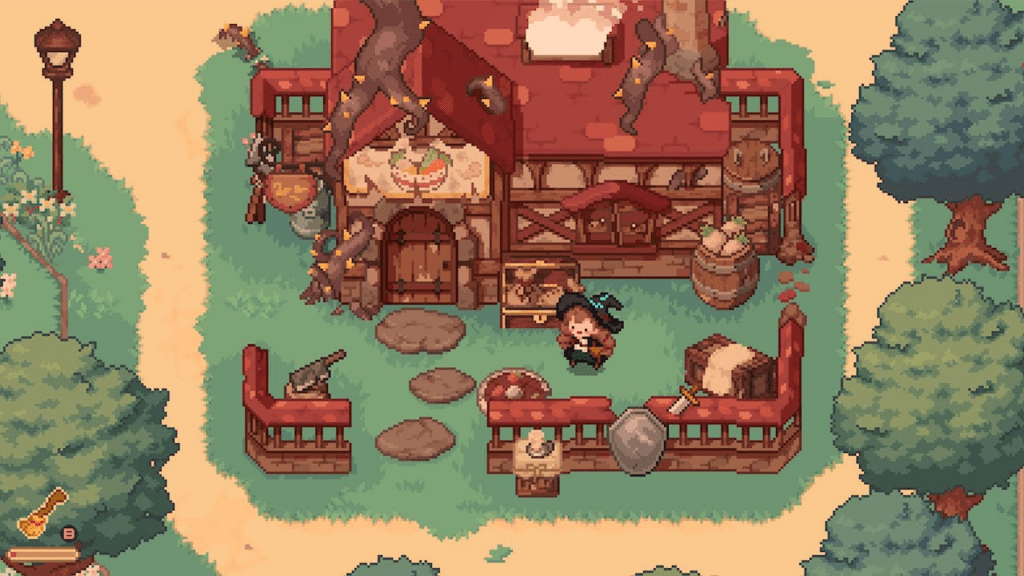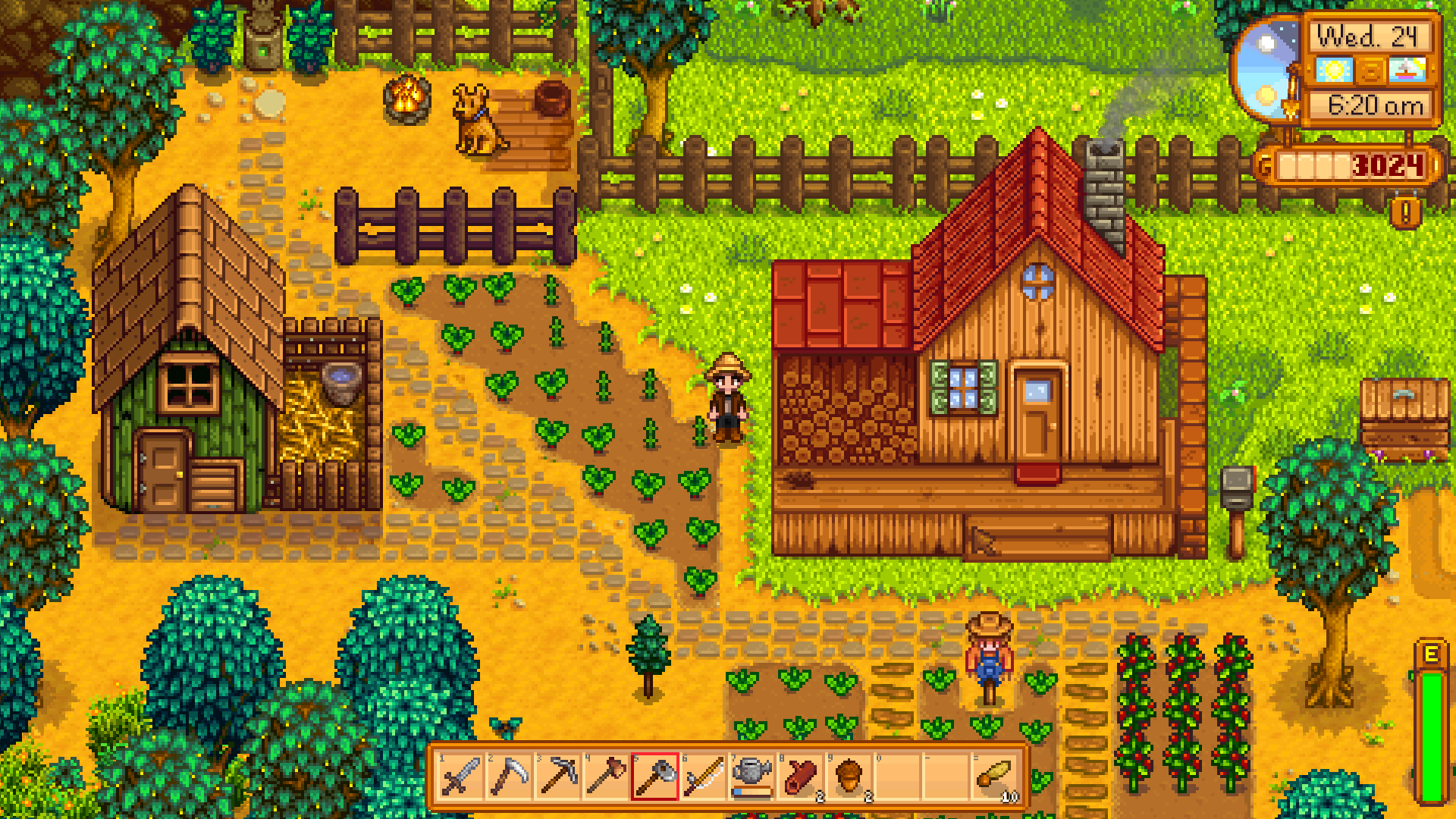The allure of open-world games lies in their ability to let players lose themselves in vast, interconnected landscapes brimming with secrets, stories, and surprises. While 3D titles like The Legend of Zelda: Breath of the Wild or Elden Ring often dominate conversations, 2D open-world games hold a unique charm. But how to make a 2D open-world game, after all? Is it as hard a task as everyone makes it out to be?
These games evoke nostalgia for classics like Stardew Valley or Terraria while offering modern developers creative freedom to experiment with art, mechanics, and storytelling. For indie developers and small studios, creating a 2D open-world game can feel daunting – but it’s far from impossible.
This article dives into the essential steps, tools, and philosophies behind building a compelling 2D experience, blending technical know-how with artistic vision.
You are going to understand today how to balance scale with detail, design non-linear progression systems, optimize performance, and foster player engagement – all while avoiding common pitfalls. Whether you’re a solo developer or part of a team, your journey begins here!
How to make a 2D open-world game: laying the foundation
Every great game starts with a strong concept, no matter the nature. Unlike linear games, where progression is tightly controlled, open worlds thrive on player agency.

Begin by asking: What makes your world worth exploring? Is it a sprawling fantasy realm with ancient ruins, a cyberpunk city teeming with verticality, or a tranquil island chain hiding dark secrets? The theme and art style must align to create cohesion.
For instance, Hollow Knight uses hand-drawn Gothic aesthetics to reinforce its melancholic, insectoid underworld, while CrossCode employs retro pixel art to evoke a vibrant sci-fi RPG atmosphere.
Next, map out your world’s structure. Even in 2D, scale matters. A common mistake is designing a world that’s too large, resulting in empty spaces or repetitive content. Instead, focus on density. Divide the world into biomes or districts, each with distinct visual and gameplay identities.
Use landmarks – a towering tree, a crumbling fortress – to guide exploration organically. Tools like Tiled or Aseprite can help sketch layouts, but pen-and-paper drafts work just as well for early prototyping.
Choosing the right tools and engine to create a 2D open-world game
The engine you select will shape your workflow. Popular choices for 2D development include Godot, Unity, and GameMaker Studio 2, each with strengths.
Godot’s lightweight architecture and node-based system excel for 2D projects, while Unity offers robust asset management and a vast plugin ecosystem. GameMaker Studio 2 simplifies coding with its drag-and-drop interface, ideal for beginners.
Whichever engine you choose, prioritize tools that support tile-based mapping. Tilemaps are the backbone of 2D worlds, allowing developers to “paint” environments using reusable sprites. For example, a forest biome might combine grass, tree, and rock tiles in varying patterns.
Modern engines automate tile adjacency rules (e.g., ensuring water tiles blend smoothly with shorelines), saving hours of manual adjustments.
Art and animation also demand attention, of course. Open worlds require hundreds – if not thousands – of sprites, so consistency is key. Establish a style guide early, defining color palettes, sprite dimensions, and animation frame rates.
Tools like Aseprite (for pixel art) or Procreate (for hand-drawn assets) streamline this process. If art isn’t your forte, consider collaborating with freelance artists or leveraging marketplaces like OpenGameArt for free/paid assets.
Designing exploration and progression mechanics

In open-world games, progression is rarely linear. Players expect freedom to tackle objectives in any order, which complicates balancing difficulty and narrative. To solve this, implement scaling systems or regional difficulty tiers.
For example, The Elder Scrolls II: Daggerfall assigned enemy levels based on dungeon depth, while Dark Souls locks tougher areas behind skill checks like boss battles.
Quests and side activities must also feel organic. Avoid overwhelming players with map markers; instead, let them discover quests through environmental cues. A ruined village might hint at a bandit infestation via broken fences and looted homes, nudging players to investigate.
Likewise, rewards should incentivize exploration. Hidden weapons, lore scrolls, or traversal upgrades (e.g., a double jump) keep players curious.
For inspiration, study how Hyper Light Drifter uses minimal text and maximal visual storytelling. Its world feels alive not through dialogue, but through haunting landscapes and cryptic symbols.
In this other article, we discuss more about storytelling and offer additional strategies for weaving narratives into open environments.
Technical challenges of creating open-world 2D games: optimization and persistence
Performance is a silent killer of open-world ambitions. Large maps strain memory, especially on mobile or web platforms. Solutions include:
- Chunk loading: Only render areas near the player, unloading distant regions.
- Sprite atlases: Combine multiple sprites into single textures to reduce draw calls.
- Culling: Hide off-screen objects or background layers.
Save systems are equally critical. Players expect seamless progress, so implement auto-saves at checkpoints (e.g., entering a town) and let them manually save anywhere.

Serialization – converting game states into storable data – can be tricky. JSON or binary files work, but databases like SQLite handle complex data more efficiently.
Testing and iteration: listening to your world
No open-world survives first contact with players! Testing reveals invisible walls, unbalanced enemies, and pacing issues. Conduct closed alpha tests with trusted peers, then expand to public betas.
Watch how players navigate: Do they gravitate toward certain areas? Get lost frequently? Tools like heatmaps (recording player movement) or feedback forms provide actionable data.
Iteration is a loop, not a phase. Be prepared to cut content that doesn’t serve the experience. A beautiful mountain range is pointless if players bypass it entirely.
Bring your vision to life with Main Leaf!
Creating a 2D open-world game is a marathon, blending creativity with technical discipline. It demands patience, adaptability, and a willingness to learn from missteps. Yet, the reward – a living, breathing world that players cherish – is unparalleled.
For developers seeking guidance, we here at Main Leaf specialize in turning ambitious ideas into polished realities. From concept art to final optimization, our team has the expertise to elevate your project. Explore our game development services to see how we can help craft your next great adventure.
Whether you embark on this journey solo or with a crew, remember: every sprawling world began as a single idea. Now, it’s your turn to build – and we offer you all the helping hands you need.

